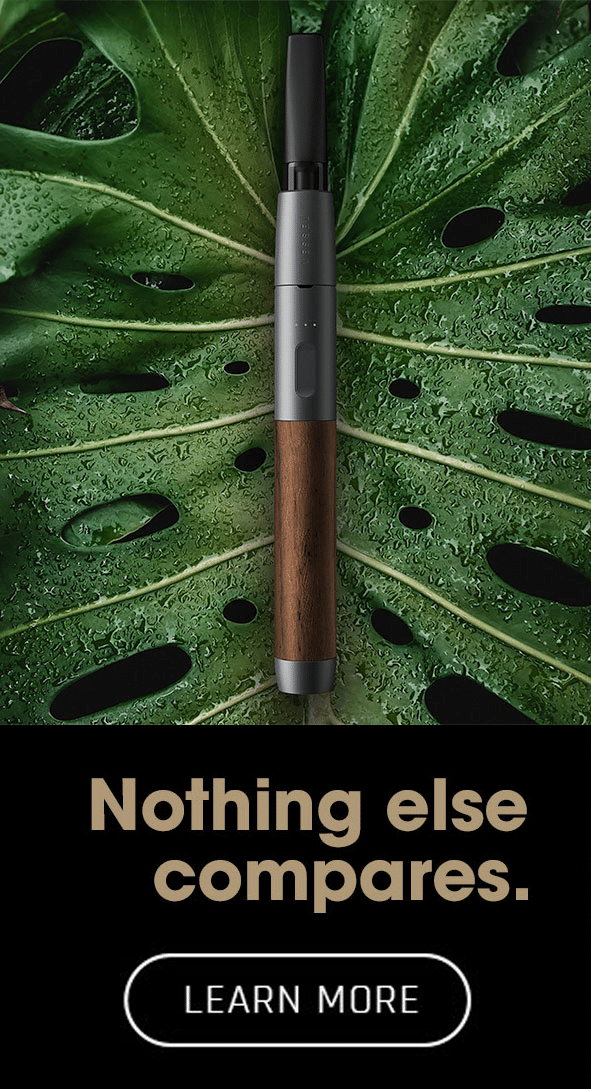Cannabis For Autism?
Susan Stevens Martin, who is the director for the division of media relations of the American Academy of Pediatric was quoted saying, “The American Academy of Pediatrics (AAP) recommends the use of scientifically validated treatments. The use of medical marijuana to treat autism has not been tested and could be dangerous to children.” I completely agree with the first part of her statement that only scientifically validated treatments should be used. However the second part is controversial. Let’s dig into this from a scientific perspective.
This is a highly controversial issue which needs to be discussed so let’s shed some light in this area and open the lines of communication by briefly 1) Covering what is known regarding autism in terms of diagnosis and treatments, 2) Touching on what is known regarding cannabinoids and autism, and 3) Discussing what research still remains to be done in order to make a scientific and informed decision regarding the use of cannabis in autistic children and 4) Obtaining cannabis for your child.
1. What is autism spectrum disorder (ASD)
Parents of autistic children carry a substantial burden. They live in a world of constantly being challenged and discouraged by the child’s communication and behavior problems. Ultimately, parents and caregivers will become emotionally and physically exhausted.
Autism spectrum disorder (ASD) and autism are often used interchangeably that refer to disorders of brain development with the symptoms emerging between 2 and 3 years of age. ASD is a type of neurodevelopmental disorder characterized by dysfunctions in social interaction, communication skills, and repetitive/stereotyped behaviors. Diagnosis is based on three main criteria: 1) Impairments in communication (verbal and nonverbal), which presents as failure to develop useful speech or delay in language development, 2) Abnormal social development, which presents as difficulty interacting in a social environment (social interactions) and an inability to relate to peers, and 3) Repetitive behavior, which presents as stereotyped and repetitive play patterns such as collecting and lining up of toys. Furthermore, ASD can be associated with motor coordination difficulty and physical health issues such as sleep and gastrointestinal disturbances. Several children display emotional and cognitive detachment, violent outbursts, causing distress and harm not only to themselves, but also to those who are only trying to help.
While the exact cause has yet to be elucidated, genetic and environmental factors are known to play a critical role in ASDs. As a result, there is no effective cure for these disorders as typical treatment regimens consist of behavioral, nutritional, and pharmacological approaches although no defined standard approach exists. Even though the pathogenesis of ASDs remain unclear, research efforts to define, validate, and discover new treatments are being pursued. Various biochemical and cellular events are associated with ASDs (oxidative stress, immune system dysfunction, intestinal dysbiosis, mitochondrial dysregulation, and others) and treatments for some of these have been developed (See Figure. 1)

Figure 1. The multifactorial nature of autism and drug therapy for different targets
2. Evidence for the Involvement of the Cannabinoid System Austic Disorders.
Since ASD is so far an incurable disease and the available pharmacological treatments have limited efficacy and unideal side-effect profiles, it is time to shift our focus and try something new. Now let’s switch gears to cannabis and discuss the role of cannabinoids as potential novel pharmacological treatments for ASDs. The endocannabinoid system (ECS, see Figure 2) is a beautiful and intricate network consisting of endocannabinoids, their receptors, and the associated enzymes which plays a critical role in maintaining the body’s homeostasis. The ECS has been implicated in a broad spectrum of condition ranging from appetite regulation to cancer. Recently, evidence is emerging in the scientific literature that demonstrates the involvement of the ECS in modulating several developmental disorders such as ASD.

Figure 2. The Human Endocannabinoid System
Image Source: https://www.whaxy.com/learn/what-is-the-endocannabinoid-system
A study published in Current Neuropharmacology in 2011 demonstrated that the cannabinoid system is implicated in the social behavior of mice. One of the key findings from this study was the discovery that the cannabinoid receptor 2 (CB2) receptor was upregulated in mice exhibiting autism-like behavioral phenotypes compared to control mice.
Standford University researchers recently published a landmark paper in Neuron demonstrating that alterations in endocananbinoid signaling may contribute to the pathophysiology of autism. The key findings from this study demonstrate that neuroligin-3 (NL3) is required for tonic endocannabinoid signaling (long lasting signaling which affects memory formation, pain, learning, and other important pathways). Neuroligin dysfunction has been implicated in ASD. The link between NL3 and the enodcananbinoid system indicates the significance of this signaling pathway and opens the door to the possibility that the modulation of endocannabinoids may represent a novel therapeutic strategy for autism.
A recent study, published earlier this year in the Journal of Autism Developmental Disorders, from the Biomedical Center for Autism Research and Treatment suggests the CB2 receptor as a potential therapeutic target for the pharmacological management of autism care. This study was the first to demonstrate the upregulation of CB2 receptors in peripheral blood mononuclear cells (PBMCs) in autism disorder in human subjects. The CB2 receptor alterations that were observed in AD-PBMCs demonstrate that the endocannabinoid system may be involved in the pathogenesis or maintenance of autistic disorder. According to the findings, the endocannabinoid system may represent a novel treatment opportunity for autism pharmacotherapy.
3. Are we there yet?
There have been several reports from parents that cannabis has helped their child cope with ASD. Furthermore, several parents have reported that their child’s quality of life has significantly improved as a result of cannabis use. The cannabis that parents say helps calm seizures is not your “typical pot.” The cannabis they are referring to has low levels of THC and high levels of CBD (cannabidiol). CBD is a cannabinoid present in the plant which displays no psychoactivity (users do not “get high”). CBD has been shown to exhibit several biological actions including anticonvulsive, sedative, hypnotic, antipsychotic, anti-inflammatory and neuroprotective properties.
Research scientists make decisions based on scientific evidence from a carefully designed experiment with controls. However, scientists and physicians also have available a different kind of evidence which is often undervalued. Anecdotal evidence or self-reporting is often disregarded and is, in a sense, the smallest research studies of all. The reason why this is usually ignored is there is too much variability in cannabis composition at the moment. What works for one patient may not work for another patient simply because of the differences in the cannabinoid composition they were self-administering; batch to batch variability is a major concern.
One solution to this is to standardize the protocol in which cannabis is prepared, thereby ensuring each batch of cannabis has the same composition. This would eliminate the concerns of batch to batch variability and should be the focus of companies who are manufacturing cannabis for medical purposes.
Patients take advantage of the vast number of cannabis strains that are available to determine which is the most efficacious for their purposes. However, since each cannabis strain has its own unique fingerprint, no two are alike. Therefore, since the cannabinoid compound composition is slightly different, the pharmacology of each strain will depend on the concentration of the cannabinoids. In the near future, the goal here is to first determine which strain works for a particular patient, then characterize that strain in terms of composition and pharmacology, then manufacture that strain specifically for that patient only.
There have so far been no randomized controlled trials (the gold standard for a clinical trial) and the research is in its infancy regarding the impact of cannabis use as a potential therapy for ASD. The three studies I highlighted earlier warrant further research to be conducted in this area. If the endocannabinoid systems turn out to be linked to autism in humans, medical marijuana may represent a potential treatment. However, we have only just begun to touch the surface in this area. Further research is required in order to better understand the connection between the endocannabinoid system and ASD.
It is my hope that this post will help fuel research into cannabis as a potential treatment for ASD. Furthermore, to all the physicians out there, please take the time to listen to your patients when they say something is working for them as opposed to the standard treatment regimen. Take the time to reach out to scientists to learn more about the involvement of the endocannabinoid system in modulating a wide range of diseases and disorders. Now is not the time to be stubborn and let personal opinions on cannabis cloud judgment: I believe it was the late physician Sir William Osler who said it best, “The greater the ignorance the greater the dogmatism.”
4. Obtaining Cannabis for your Child?
Cannabinoid administration for children suffering from ASD is a highly controversial, legal, and ethical issue. It is important to briefly mention the process of obtaining cannabis for use in children. Parents of children who have met certain qualifications will further need to obtain approval from both a pediatrician and a psychiatrist. At least one of those doctors must be enrolled in the state’s programs.
For patients, parents, and family members looking for Cannabis treatments in Pennsylvania specifically, please visit this link:
http://truvohealthcare.com/portfolio/cannabis-for-autism-in-pennsylvania/
For related articles by Quantum 9, please visit the links below:
https://quantum9.net/high-cbd-strains/
https://quantum9.net/can-cannabis-cure-mesothelioma-and-other-cancers/




If it does nothing else – Cannabis will help alleviate some of the symptoms such as sleep, feeding and agitation associated with Autism Spectrum Disorder.
I have been taking CBD oil from hemp for about 2 weeks and am surprised that like my friend told me, my aches and pains would get less – and they have. My friend is giving it to her child with autism and she has seen life changing benefits including her son’s first spoken word. Does anyone else have experience with CBD oil? Can it be this simple? Thanks.
Ericka – thank you very much for your comment. It is fantastic to hear it appears to be that easy in your case, even though I’m sure it’s been quite a journey to get to this point for you and your family. We believe CBD oil can also benefit others in need the same as you’re experiencing, but the only way to do this is by sharing success stories like yours. Thanks for doing so and please continue to share any updates, we will do the same!
Attractive section of content. I just stumbled upon your site and in accession capital to
assert that I get in fact enjoyed account your blog posts.
Any way I’ll be subscribing to your feeds and even I achievement you
access consistently quickly.
Thank you very much.
Hi, i think that i saw you visited my website
so i came to “return the favor”.I’m attempting to find things
to enhance my website!I suppose its ok to use a few of your ideas!!
Hi there, I found your website by means of Google even as looking for a similar topic, your web site came up, it looks good.
I have bookmarked it in my google bookmarks.
Hi there, simply become alert to your weblog thru Google, and found that it’s truly informative.
I am gonna watch out for brussels. I will be grateful in the event you continue this in future.
A lot of other folks shall be benefited out of
your writing. Cheers!